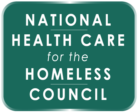By Marian Moser Jones
Since the 1980s, black persons have been overrepresented in the United States homeless population. Given that morbidity and mortality is elevated among both the black population and the homeless population in comparison to the general U.S. population, this overrepresentation has important implications for health policy. However, the racial demographics of homelessness have received little attention from policymakers. This article reviews published social and behavioral science literature that addresses the relationship between race and contemporary homelessness in the United States. This literature points to substantial differences between racial subgroups of the U.S. homeless population in vulnerabilities, health risks, behaviors, and service outcomes. Such observed differences suggest that policies and programs to prevent and end homelessness must explicitly consider race as a factor in order to be of maximum effectiveness. The limited scope of these findings also suggests that more research is needed to better understand these differences and their implications.

